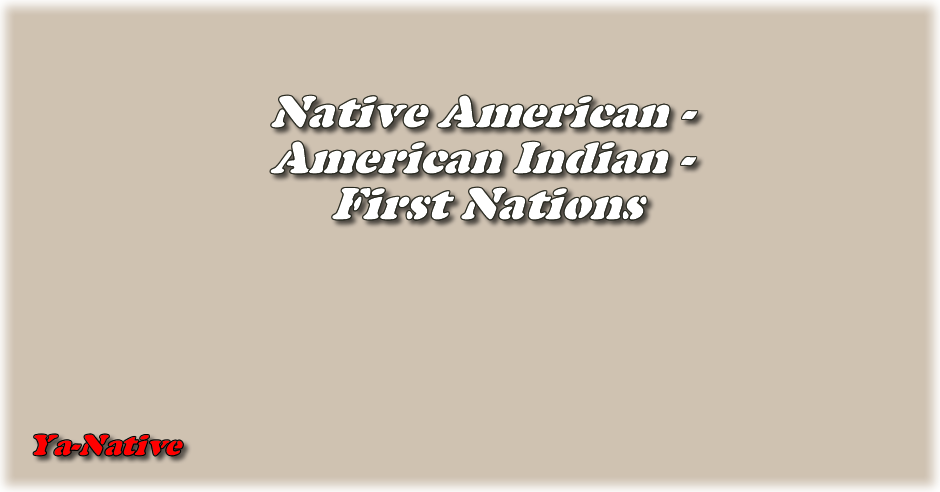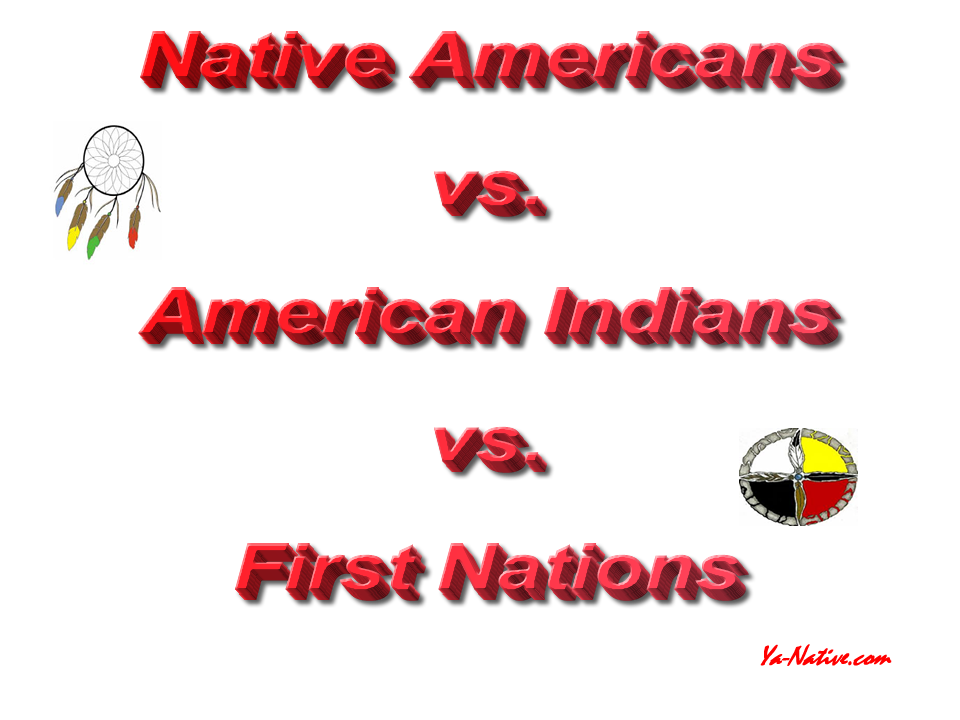
The terms Native American, Indian, and First Nations are often used interchangeably to refer to the Indigenous peoples of North America. However, the meaning and usage of these terms can be complex and vary depending on cultural, historical, and geographical contexts. In this article, we will explore the differences and similarities between these terms and provide insights into the cultural and linguistic diversity, history, contemporary challenges, stereotypes, and misconceptions surrounding the Indigenous peoples of North America. Through this exploration, we aim to promote mutual respect and understanding towards these diverse and rich cultures.
Introduction: Understanding the Terminology
When referring to Indigenous peoples of the Americas, three commonly used terms are Native American, Indian, and First Nations. However, there is often confusion about the differences and nuances between these terms. Understanding the terminology is important in respecting and acknowledging the diversity and unique identities of Indigenous peoples.
Explaining the Terminology
Native American is the broadest term and includes Indigenous peoples from the United States and Canada. Indian is a term that historically referred to Indigenous peoples from India, but is now commonly used in North America to refer to Indigenous peoples. First Nations specifically refers to Indigenous peoples of Canada.
It is important to note that these terms are not interchangeable and should not be used to generalize the experiences or identities of all Indigenous peoples in North America. Instead, it is important to recognize and respect the diversity and individuality of each community.
History and Background of Native Americans, Indians and First Nations
Origins and Early History of Native Americans
The origins of Native American peoples are still being studied and debated. However, it is widely accepted that Indigenous peoples have lived in the Americas for thousands of years before the arrival of Europeans. These Indigenous communities were diverse in their cultures, languages, and traditions.
The Arrival of Europeans and the Impact on Indigenous Peoples
With the arrival of Europeans in the Americas, Indigenous communities were forced to confront numerous challenges. European colonization brought conflict, disease, and the loss of land and resources. These factors contributed to the decline of Indigenous populations and cultures.
Indian and First Nations History
In Canada, Indigenous peoples are commonly referred to as First Nations. These communities have a long and complex history, including the impact of European colonization, the Indian Act of 1876, and the residential school system. These historical factors have contributed to inequalities and challenges that Indigenous communities continue to face today.
Cultural and Linguistic Differences Among Native Americans, Indians and First Nations
Diversity Among Native American Cultures
Native American cultures are incredibly diverse, with over 500 federally recognized tribes in the United States alone. Each community has unique traditions, languages, and histories.
Linguistic Differences and Similarities
There are over 300 languages spoken by Indigenous peoples in North America. Some Indigenous languages are similar, while others are completely distinct. Language revitalization efforts are important in preserving and honoring Indigenous culture and identity.
Traditional Beliefs and Practices
Indigenous communities have a deep respect and connection to the land and natural resources. Traditional beliefs and practices are often rooted in this relationship, and include ceremonies, storytelling, and art.
Contemporary Issues and Challenges Faced by Native Americans, Indians and First Nations
Health and Poverty Issues
Indigenous communities in North America face numerous health and poverty issues. These include high rates of diabetes, substance abuse, and mental health concerns. Poverty rates are also disproportionately high in Indigenous communities.
Environmental Concerns
Indigenous communities are often on the frontlines of environmental destruction and climate change. The impact of mining, oil and gas extraction, and other industrial activities threaten the land and resources that are crucial to Indigenous cultures and ways of life.
Political and Legal Issues
Indigenous communities continue to fight for recognition of their sovereignty and treaty rights. Issues of land and resource management, education, and representation are ongoing challenges. Recognition and respect of Indigenous rights is crucial in addressing these challenges and working towards a more just and equitable society.
Stereotypes and Misconceptions About Native Americans, Indians and First Nations
Common Stereotypes and Their Origin
Stereotypes and misconceptions about Indigenous peoples have been prevalent for centuries. One of the most common stereotypes is that all Native Americans, Indians, and First Nations people are the same, when in fact they are diverse groups with distinct cultures, languages, and traditions. Other stereotypes include the "noble savage," the idea that Indigenous peoples are primitive and backward, and the "drunken Indian," the harmful stereotype that portrays Indigenous peoples as alcoholics.
These stereotypes originated from colonialism, which distorted the image of Indigenous peoples to justify their exploitation and subjugation. The media also perpetuates these stereotypes, often portraying Indigenous peoples in a negative light.
Impact of Stereotypes on Indigenous Peoples
Stereotypes and misconceptions have significant harmful effects on Indigenous peoples, such as eroding their self-esteem, creating social exclusion and marginalization, and perpetuating discrimination and racism. These harmful stereotypes also contribute to the loss of Indigenous languages and cultures as younger generations are discouraged from embracing their heritage, leading to cultural assimilation.
Challenging Negative Stereotypes
To challenge negative stereotypes about Indigenous peoples, we must actively educate ourselves about their diverse cultures, histories, and contemporary issues. We must also advocate for Indigenous rights and justice, support Indigenous-led organizations and movements, and promote positive representation of Indigenous peoples in the media.
Preservation and Promotion of Indigenous Languages and Cultures
Language Loss and Revitalization Efforts
Indigenous languages worldwide are under threat of extinction due to colonization, residential schools, and government policies. Language loss has a significant impact on Indigenous cultures as it erodes knowledge systems, traditions, and cultural practices. However, many Indigenous peoples are fighting to revitalize their languages through language-immersion schools, community language programs, and digital resources.
Cultural Preservation Through Art and Storytelling
Indigenous peoples use art and storytelling to preserve their cultures and connect with their ancestors. Traditional art forms such as beadwork, weaving, and carving are still practiced today and are an essential part of Indigenous cultures. Traditional stories and oral histories are also passed down from generation to generation, providing a connection to the past and preserving Indigenous knowledge.
Importance of Indigenous Knowledge Systems
Indigenous knowledge systems are a vital part of the cultural survival of Indigenous peoples. These knowledge systems include traditional ecological knowledge, healing practices, and cultural protocols that provide a unique perspective on the world. Recognizing and respecting Indigenous knowledge systems is crucial to promoting Indigenous cultures and advancing environmental sustainability and social justice.
Indigenous Rights and Sovereignty
United Nations Declaration on the Rights of Indigenous Peoples
The United Nations Declaration on the Rights of Indigenous Peoples outlines the minimum standards necessary for the survival, dignity, and well-being of Indigenous peoples worldwide. The declaration recognizes Indigenous peoples' rights to self-determination, their lands and territories, and their cultural heritage. Furthermore, it acknowledges the need for the full and effective participation of Indigenous peoples in decision-making processes that affect their lives.
Land and Resource Rights
Indigenous peoples have been fighting for their land and resource rights since colonialism began. These rights include the recognition of their territories and the right to free, prior, and informed consent regarding any development projects that affect their lands. Failure to recognize Indigenous land and resource rights has resulted in the displacement of Indigenous communities and the destruction of the environment.
Sovereignty and Self-Determination
Indigenous sovereignty and self-determination refer to the right of Indigenous peoples to govern their own affairs and make decisions that affect their lives. These concepts are essential to Indigenous cultures and are necessary for the survival and well-being of Indigenous communities. Recognizing Indigenous sovereignty and respecting Indigenous self-determination is crucial to promoting Indigenous rights and justice.
Conclusion: Moving Towards Mutual Respect and Understanding
Importance of Acknowledging and Respecting Indigenous Peoples
Acknowledging and respecting the unique cultures and histories of Indigenous peoples is an essential step towards promoting social justice and addressing colonialism's legacy. It also recognizes the valuable contributions that Indigenous peoples have made and continue to make in fields such as art, science, and technology.
Ways to Promote Mutual Respect and Understanding
To promote mutual respect and understanding, we must actively listen to Indigenous voices, support Indigenous-led initiatives, and educate ourselves about Indigenous histories and cultures. We must also advocate for Indigenous rights and justice, support Indigenous language and cultural revitalization efforts, and promote positive representation of Indigenous peoples in the media. By doing so, we can work towards a future where Indigenous peoples are heard, respected, and celebrated.In conclusion, the terms Native American, Indian, and First Nations are just the tip of the iceberg when it comes to the cultural richness and diversity of Indigenous peoples in North America. By understanding and respecting the differences and similarities between these groups, we can promote a more inclusive and equitable society. As we move forward, let us continue to celebrate and preserve the unique cultural heritage and wisdom of Indigenous peoples, while working towards a brighter future for all.
FAQ
What is the difference between Native American, Indian, and First Nations?
These terms are often used interchangeably to refer to Indigenous peoples of North America. However, "Native American" generally refers to Indigenous peoples from the United States, "Indian" refers to Indigenous peoples from Canada, and "First Nations" refers to Indigenous peoples in Canada who are not Inuit or Métis.
What is the significance of cultural and linguistic diversity among Indigenous peoples?
The Indigenous peoples of North America are incredibly diverse, with hundreds of distinct cultures, languages, and traditions. Recognizing and celebrating this diversity is crucial for promoting understanding and respect towards these communities and preserving their unique cultural heritage.
What are some of the contemporary challenges faced by Indigenous peoples?
Indigenous peoples in North America face a wide range of challenges, including poverty, health disparities, environmental degradation, and political and legal marginalization. Recognizing and addressing these challenges is essential for promoting equity and social justice.
What can individuals do to promote respect and understanding towards Indigenous peoples?
There are many ways that individuals can promote respect and understanding towards Indigenous peoples, including learning about their cultures and histories, supporting Indigenous-led initiatives and organizations, and advocating for policies that promote equity and justice for these communities.
